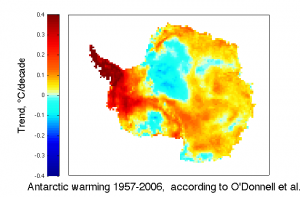Guest commentary from Michael Tobis and Scott Mandia with input from Gavin Schmidt, Michael Mann, and Kevin Trenberth
While it is no longer surprising, it remains disheartening to see a blistering attack on climate science in the business press where thoughtful reviews of climate policy ought to be appearing. Of course, the underlying strategy is to pretend that no evidence that the climate is changing exists, so any effort to address climate change is a waste of resources.
A recent piece by Larry Bell in Forbes, entitled “Hot Sensations Vs. Cold Facts”, is a classic example.
[Read more…] about Forbes’ rich list of nonsense

